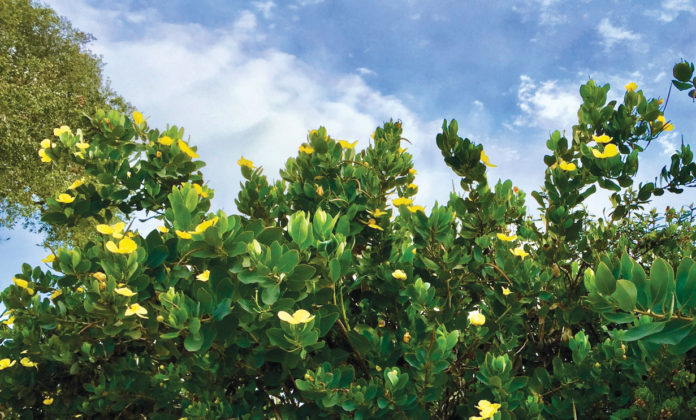Many years ago I started writing a book about gardening in the Santa Cruz Mountains. One of many interesting subjects I researched was the different soils we have here in the mountains. I don’t need to tell you if you garden in dense clay, serpentine soil or that sandy soil like being at the beach that our soils are challenging. That sandy soil? Well, it’s because we used to be a beach eons ago before the land rose up out of the sea. Here are some tips for those who live with sandy soil.
The distinct region of the Santa Cruz sandhills, with its gritty, well-drained soil, presents both opportunities and hurdles for gardeners. How to turn your sandy soil into a thriving garden?
Sandy soil is composed of larger particles compared to clay or loam, meaning it drains quickly and doesn’t retain nutrients well. This is not a death sentence for your garden. You can transform your terrain into a lush, productive garden with just a few steps.
Start by improving your soil’s structure. Organic matter is your best friend. Compost can really boost your soil’s ability to retain moisture and nutrients. Regularly adding organic matter will gradually improve its texture and fertility. Do this every year. Cover crops, such as clover or fava beans, can be very beneficial. They not only add organic matter to the soil when turned under, they improve soil structure and even fix nitrogen, enriching the soil for your plants.
Choose plants that will thrive in sandy, well-drained soil. Native plants are good choices as they are adapted to our local conditions. I see Bush Poppy (dendromecon rigid) thriving in the most inhospitable of places. Plants from the Mediterranean area and Australia are also good. Manzanita and ceanothus thrive in sandy soils. Rosemary, lavender and thyme do well in porous soil and are fragrant. Salvia, buckwheat, yarrow are easy to grow in sandy soils. Carrots, radishes and potatoes are ideal for sandy soils because they prefer loose, well-draining conditions. Be sure to provide plenty of organic matter and mulch to help retain moisture around your plants.
One of the main challenges with sandy soil is water retention. Water wisely, frequent, shallow watering won’t work here. Instead, water deeply and less often to encourage plants to develop deep root systems. Drip irrigation systems can be particularly effective, delivering water directly to the plant roots and reducing evaporation. Mulching is another critical practice. A thick layer of mulch helps retain soil moisture, suppresses weeds adding organic matter to the soil as it decomposes.
Because sandy soil doesn’t hold nutrients well, regular feeding is important. Organic fertilizers like compost tea, fish emulsion or seaweed extracts are great for providing a steady supply of nutrients. Slow-release granular fertilizer is also good.
The natural beauty and unique characteristics of the sandhills can be enhanced by incorporating elements that blend with the landscape. Rock gardens, succulent beds and native grasses can create a stunning, low maintenance garden that harmonizes with the environment.
By understanding and working with its unique characteristics, you can cultivate a thriving garden even in the Santa Cruz sandhills.
Jan Nelson, a landscape designer and California-certified nursery professional, will answer questions about gardening in the Santa Cruz Mountains. Email her at ja******@*ol.com, or visit jannelsonlandscapedesign.com.












